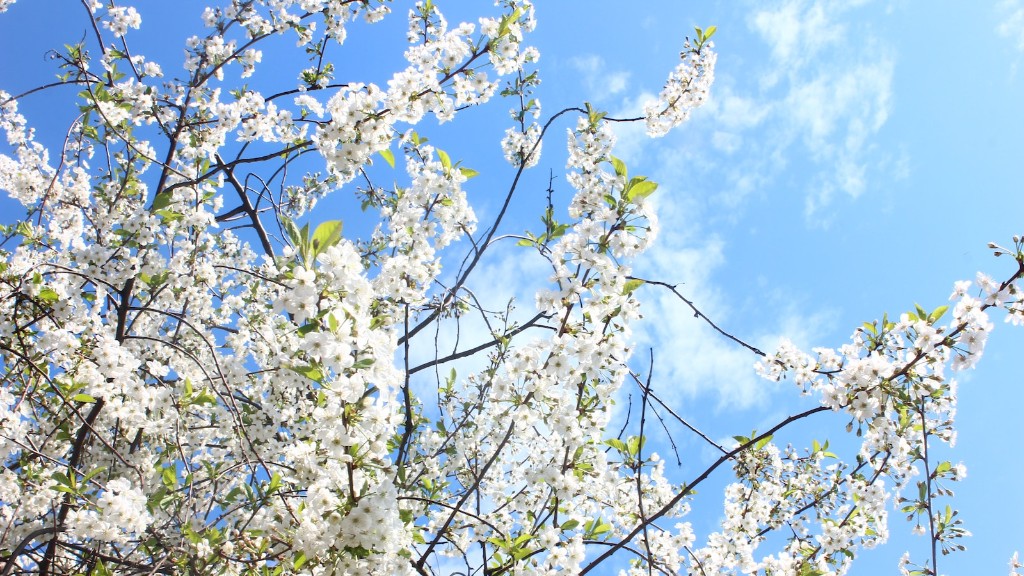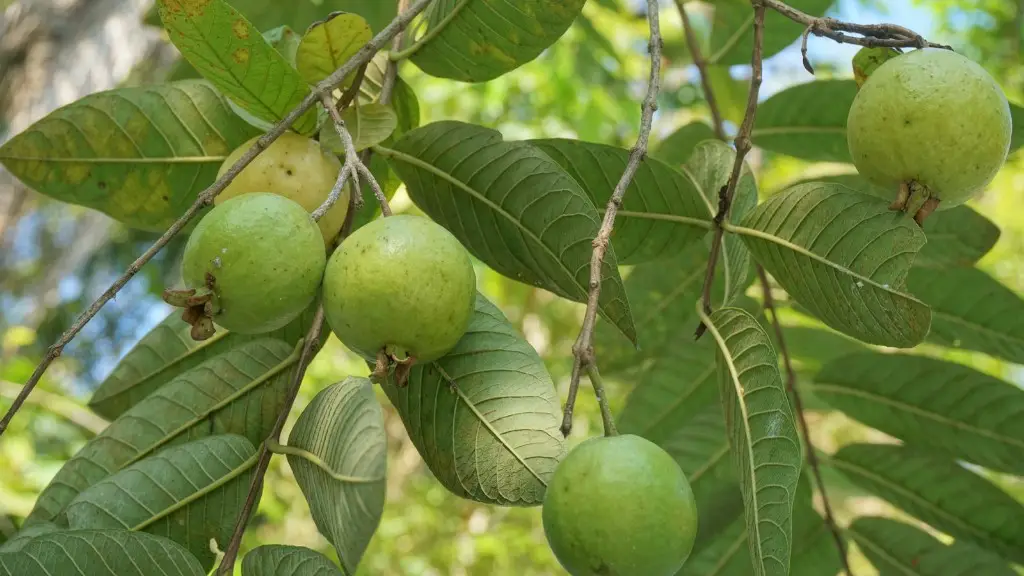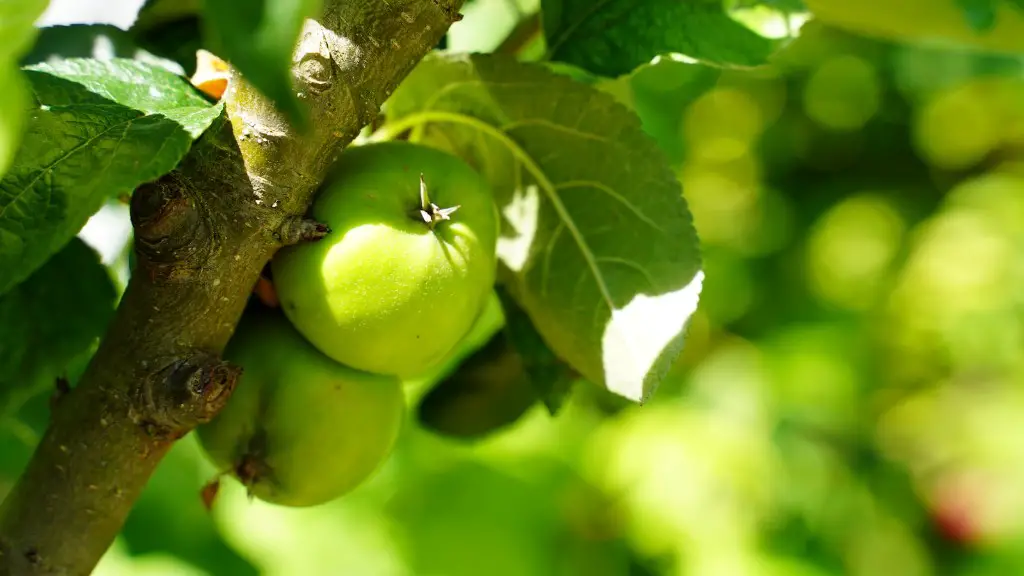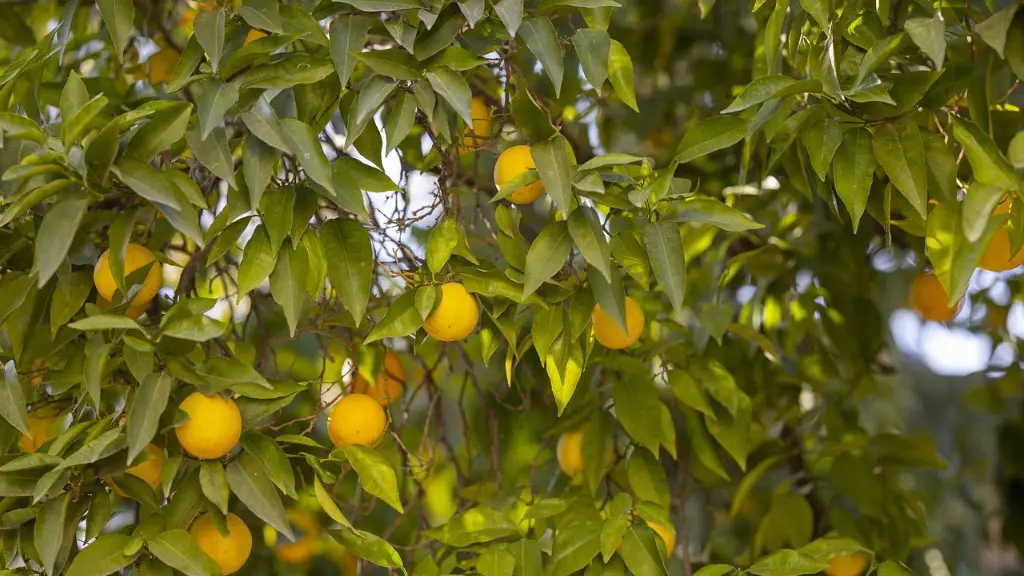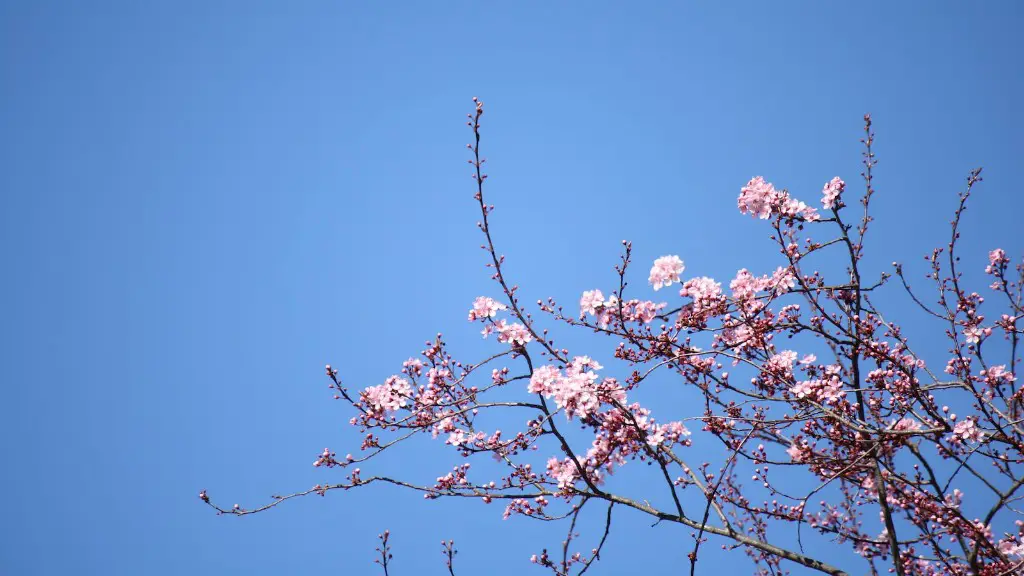Temperature
At some point, most people who care for a cherry tree will experience the disappointment of losing their beloved plant. It is essential to understand the environmental factors that can cause a cherry tree to die. Temperature can play a significant role. Depending on the type of cherry tree, it may not be able to survive in temperatures outside of its preferred range. Excessive heat or cold can damage a cherry tree and prevent it from growing properly.
Extreme cold weather can cause frost damage to flowering cherry trees, leading to poor performance or failure to produce fruit. Cherry blossoms are extremely sensitive to freezing temperatures, so when a flower has been damaged by frost, it can no longer produce fruit and will eventually decline and die. Additionally, warm winters can reduce the amount of chill hours needed for successful flowering and fruiting by only causing shallow dormancy.
Extreme heat can also negatively affect a cherry tree. If the temperature is too hot, the cherry tree may not be able to survive the temperature. Additionally, excessively hot temperatures can cause sunburn on the leaves, branches and fruit of the tree. In some cases, the cherry tree may be able to survive a heat wave if it makes it through the initial shock. However, there is no guarantee that the tree will recover and continue to thrive, as the stress may have been too much for the tree to bear.
It is important to understand the temperate climate in which the cherry tree is being grown. If the cherry tree is in an environment where the temperatures are too low or too high, then it is likely that it will not survive. Furthermore, if the temperature fluctuates rapidly and unpredictably, it can be especially deadly to cherry trees as they will not be able to adapt to the changes.
Soil
In addition to temperature, the soil in which the cherry tree is grown is also a major factor in whether the tree will survive or not. The soil should provide the tree with the proper nutrients and maintain adequate moisture so that the tree can stay healthy and robust. Poor soil can be lacking in essential nutrients, or have too much clay, sand, or other materials that can interfere with the tree’s ability to take in water and nutrients from the soil.
Cherry trees are also susceptible to root rot, which is caused by excessively wet soil that is poorly drained. If the soil is constantly saturated, the tree’s roots will be deprived of the oxygen they need to stay healthy. Root rot can cause the tree to decline over the course of months or years and eventually die. Additionally, overly dry soil can cause the tree’s roots to dry out and deplete the tree of the water it needs, leading to wilting, leaf drop, and eventually death.
Soil pH and composition should also be taken into consideration when caring for a cherry tree. The ideal soil for cherry trees is slightly acidic, with a pH between 6.0 and 7.0. Additionally, the soil should be nutrient-rich and loose, so that the tree’s roots can get adequate water and nutrition. If the soil is not of good quality and sufficient nutrients are lacking, the tree may not be able to thrive.
Pests
Pests can be a major threat to cherry trees, as they can cause significant damage and lead to the death of a tree. Insects like aphids, moths, and caterpillars can attack the leaves and stems of cherry trees, feeding off of them and sucking out the tree’s precious fluids. These creatures can quickly defoliate a tree, leaving it vulnerable to extreme temperatures and diseases. Additionally, fungi and bacteria can cause root rot and other diseases which can further weaken the tree, eventually leading to its death.
It is important to inspect your cherry tree regularly for signs of pests. If you spot any insects or other creatures, take action quickly to prevent them from becoming a major problem. Various methods of pest control can be used to combat these creatures, such as insecticides and natural remedies. Additionally, proper pruning can remove some of the damaged or infected branches, which can help the tree recover.
It is also important to maintain healthy growing conditions to prevent pests from being attracted to the tree. An unhealthy tree is more prone to pest infestation, as the tree’s weakened condition makes it less able to fight back against its attackers. Keep the tree adequately watered and pruned to promote healthy growth, as this will make it less likely that pests will target your cherry tree.
Fungal Diseases
Fungal diseases are another common cause of death for cherry trees. Fungi thrive in damp and humid environments, making cherry trees particularly susceptible to fungal infections. Common fungal diseases include blight, which can cause dark lesions on the tree’s bark and stems; powdery mildew, which can cause whitish-gray spots on the leaves; and root rot, which can kill the tree’s roots and ultimately cause the cherry tree to die.
Although fungal diseases are difficult to treat, there are certain steps that can be taken to reduce the risk of infection. Avoiding wetting the leaves when you water the tree is essential, as fungal diseases thrive in wet conditions. Additionally, remove any dead or diseased branches or leaves, as these can act as a breeding ground for the fungus. If you spot any fungal symptoms, consult with a local arborist and use the recommended treatments as soon as possible, as this can help prevent the disease from spreading and potentially killing the tree.
Pruning
Pruning is essential to keep a cherry tree healthy and growing. Regular pruning ensures that the tree is not overgrown and that the foliage is not taking up too much energy from the tree. This can also help prevent pests from attacking the tree, as an overgrown tree acts like an inviting buffet for these creatures. Pruning also encourages the cherry tree to focus its energy on producing fruits rather than on growing more branches and foliage.
It is important to prune the cherry tree at the right time of year. Pruning during the dormant season, usually late winter or early spring, is ideal as it will help reduce the amount of stress on the tree. Additionally, it is important to understand cherry tree pruning techniques, such as which branches to prune and how to prune them, to prevent damaging the tree. Properly pruned trees will be able to thrive and should begin to produce an abundant harvest.
Fertilization
Cherry trees grow best when they receive adequate nutrition, which can be provided by fertilization. Fertilizing will provide the necessary nutrients to help the tree thrive and produce large, healthy fruits. Fertilizing is especially important for young trees, as they are not yet able to absorb enough nutrients from the soil and need additional sources of nutrition. Furthermore, fertilizing during the flowering season can encourage more flowers to be produced and result in a larger harvest.
It is important to use the correct fertilizer for the type of cherry tree that you have. Depending on the type of cherry tree, the fertilizer may need to be applied at periodic intervals throughout the year or at specific times during the growing season. Additionally, understanding how to properly apply the fertilizer is essential to ensure that the tree receives adequate nutrition. Applying fertilizer in the wrong way can lead to an accumulation of fertilizer salts in the soil, which can damage the tree’s roots and potentially lead to its death.
Exposure
Another factor that can contribute to a cherry tree’s death is improper exposure to sunlight. Cherry trees need at least 8 hours of direct sunlight each day to properly photosynthesize and receive the energy it needs to grow. If the tree is planted in an area that receives too little sunlight, it will be weak and eventually wilting and decline.
So make sure that your chosen spot for the cherry tree receives plenty of sunshine throughout the day. Additionally, if the tree is planted in an area that receives too much sunlight, such as a south-facing wall or the top of a hill, sunburn can occur. Sunburn can cause the leaves to turn brown and brittle, eventually leading to their death. Thus, it is important to find the right balance between too much and too little sunlight.
Proper Care
Finally, it is essential to provide the cherry tree with proper care in order to ensure that it survives and thrives. Taking the time to understand the environmental and biological needs of the tree is essential. Understanding temperature, soil, pests, fungal diseases, pruning, and fertilization needs can help ensure that the tree is healthy and able to resist the elements. Additionally, providing the cherry tree with adequate water, protection from pests and disease, and proper pruning and fertilization are essential for the tree’s survival.
If these steps are taken and the cherry tree is still declining and eventuality dies, then it may be due to circumstances outside of human control, such as a combination of unfavorable weather conditions or a natural disaster. Ultimately, if any of the factors outlined above are not in the cherry tree’s favor, then it is likely that it will die. Thus, understanding these factors, and providing the cherry tree with proper care and attention, is essential to its health and longevity.
